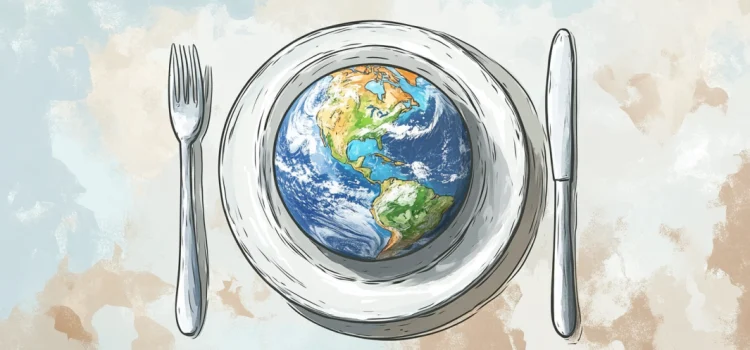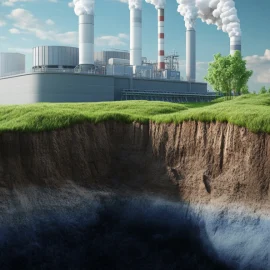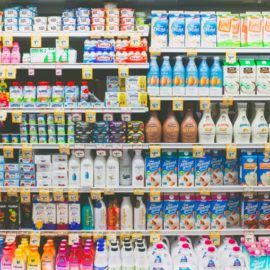

This article is an excerpt from the Shortform book guide to "Ultra-Processed People" by Chris van Tulleken. Shortform has the world's best summaries and analyses of books you should be reading.
Like this article? Sign up for a free trial here.
How do ultra-processed foods impact the environment? What is the leading cause of global biodiversity loss?
Not only are ultra-processed foods horrible for people, they’re also horrible for the environment. UPF production causes the destruction of forests, releases greenhouse gasses, and causes biodiversity loss.
Here’s a closer look at the environmental impacts of food production.
Environmental Effects of Ultra-Processed Food
What are the environmental impacts of food production? In addition to directly harming human health, UPF also contributes to carbon emissions and environmental destruction on a massive scale.
Rather than growing many small crops for local communities, which is expensive, agribusiness focuses on four or five high-yield commodity crops, such as soy and palm oil. To make these crops profitable, companies either turn them into UPF or feed them to factory animals (and much of that meat is itself made into UPF). Investing heavily in a few commodity crops contributes to climate change in many ways, including:
1. Carbon emissions from the destruction of forests. Tropical forests, which are very good at cleaning carbon dioxide out of the atmosphere and storing it, are clear-cut and burned to grow commodity crops. This releases huge amounts of carbon dioxide into the atmosphere.
In regions like the Amazon, destroying the forest also results in less rain. (Rain in the central Amazon is caused by water evaporating from the ocean and falling on coastal forests; these forests then emit water vapor, which creates clouds that travel inland to create rain.) This lack of rain results in drought. Agribusiness in the central Amazon is not only shooting itself in the foot by altering the weather patterns that irrigate its crops, it’s also contributing to climate change: The southeastern Amazon is now a carbon source rather than a carbon sink.
(Shortform note: Forests, like oceans, are examples of carbon sinks, meaning they absorb more carbon dioxide than they release. The opposite of a carbon sink is a carbon source: a process that releases more carbon than it absorbs. All processes that use fossil fuels—such as burning gasoline, coal, or wood—are carbon sources. The Amazon rainforest historically absorbed over 1.5 billion tons of carbon a year, or 4% of all emissions from fossil fuels. Due to deforestation and fires to accommodate agriculture and cattle ranching, the Brazilian portion of the Amazon now emits 3.6 billion more tons of carbon than it sequesters.)
2. Greenhouse gas emissions from growing, processing, and transportation. Massive amounts of fossil fuels, in the form of everything from fertilizers to gasoline for farm equipment, are required to grow the crops. The machinery required for processing is also energy-intensive. And most UPFs contain ingredients from four or five continents that have to be shipped internationally many times over. These factors further contribute to emissions.
(Shortform note: In How the World Really Works, scientist Vaclav Smil points out that the amount of fossil fuels required to produce agrochemicals such as fungicides, insecticides, and fertilizers is far greater than the amount required to make and power farm machinery. This is because fertilizer is made with nitrogen, which is produced using fossil fuel. It takes 1.5 liters of diesel fuel to make one kilogram of nitrogenous fertilizer. Fertilizer, in turn, releases the greenhouse gas nitrous oxide.)
As a result, industrial food production is the leading cause of global biodiversity loss and the second largest contributor to global emissions.
(Shortform note: Studies show exactly what percentage of greenhouse gas emissions is caused by each food production-related activity. Of the approximately 26% of global emissions caused by food production, livestock and fisheries account for 31% of emissions, crop production accounts for 27%, land use (destruction of forests, grasslands, and other carbon sinks to create cropland or pasture) accounts for 24%, and supply chains account for 18%, of which transport is the highest contributor, at 6%.)
UPF manufacturers also harm the environment through plastic pollution. Coca-Cola, PepsiCo, and Nestlé are the top three plastic polluters in the world. About 90% of all plastic waste ever produced has not been recycled. It’s either burned, disposed of in landfills, or littering our public lands and oceans.
(Shortform note: In How the World Really Works, Smil makes it clear that plastic waste is only one aspect of the environmental harm caused by plastics: The process of manufacturing plastics in the first place also produces large quantities of carbon emissions. This is because most plastics are made by heating petroleum (a refined fossil fuel) at very high temperatures, which requires a lot of energy. UPF companies’ heavy reliance on plastic packaging for their foods and beverages therefore negatively affects both our climate and, through plastic waste that degrades into microplastics, the health of wildlife, people, and local economies.)

———End of Preview———
Like what you just read? Read the rest of the world's best book summary and analysis of Chris van Tulleken's "Ultra-Processed People" at Shortform.
Here's what you'll find in our full Ultra-Processed People summary:
- Why it’s so hard to stop eating your favorite chips
- How the way ultra-processed food is made harms the environment
- Ways to counteract the effects of ultra-processed food






